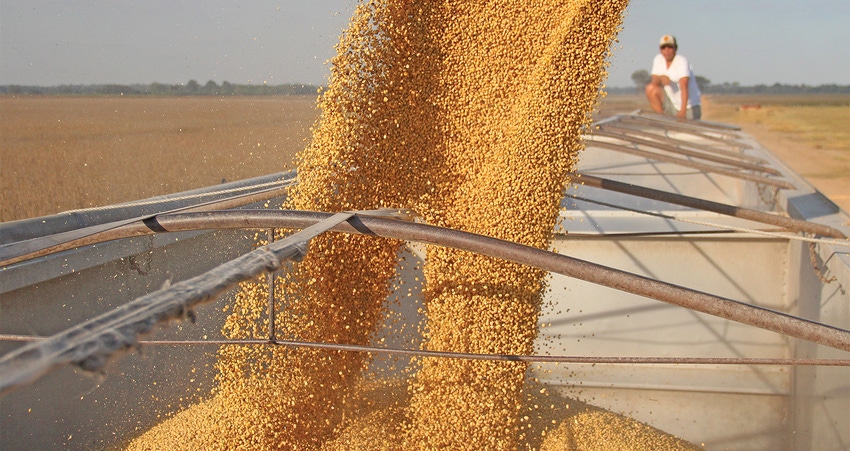
The American farmer has always been at the cutting edge of technological adoption, creativity, ingenuity, and advancement, noted Mac Marshall, vice president of market intelligence for United Soy Board/U.S. Soybean Export Council.
"For us to meet future world demand, making sure that we invest in that technology and the human capital and infrastructure remains absolutely critical," he said.
Marshall spoke to a group hosted by the Delta Council, Delta F.A.R.M. and Delta Strong at a Future Delta event outside of Clarksdale, Miss., in early October.
He works with USB leadership to evaluate and establish long-term market opportunities for the U.S. soybean industry. He is also a source of market information and analysis on behalf of USB and the U.S. Soybean Export Council.
"There are a lot of really interesting dynamics on the soy side right now," he said, regarding planning for the new crop. "I think that the market is going to call for both more corn and soy next year, but one confounding factor here is that you're all experiencing is the high price of fertilizers."
He said during the last week in September, China banned the export of phosphate fertilizer. That, combined with the already escalating cost of fertilizers, will skew the relative profitability of the producer.
"On the soy side we're coming back this last year with really good prices," he said. "We hit $16.60 per bushel in May, that's the highest price in 10 years. All of this predicated of course on a tight balance sheet and tight supplies."
Crushing
He said the soybean industry has been crushing a lot of beans. Biodiesel has been more in demand and it is influencing how much crushing is going on.
"We have this emerging sector called renewable diesel," he said. "It's kind of the backwoods part of the energy complex up until last year. And then, there started to be waves of announcements of new renewable diesel facilities being constructed around the country."
This has increased the demand for renewable fuel sources across the U.S. as renewable and clean energy incentives across the country push new and legacy energy developers to look for those sources, according to Marshall.
"What that has done is it has led to really aggressive bidding for soybean oil," he said. "We've seen bean oil go up pretty substantially. They've come down since cresting in June, actually hitting a record $0.74 a pound at the end of June."
He notes that prices have come down but are still up about 40% relative to January. The new administration's emphasis on green energy helped set the pace of retrofitting existing infrastructure and expanding additional capacity.
"Those all came very fast and furious," he said. "What this means is now the rational for processing is fundamentally changing."
50/50 split
Historically, meal has carried the water for value contribution in soybean, according to Marshall. Meal has typically accounted for 65% to 70% of the value of beans. From April until most recently both oil and meal have contributed about 50% each for their contribution to the crush.
"So, what this is doing is, crushers are now effectively incentivized to crush for oil, rather than meal," he said. "Oil has really been carrying the weight, providing a lot of incremental value to soybean."
Marshall said there are really good indications that there will be more beans coming to market next year, a lot being predicated by the new demand for soybean oil. The dynamics of the market are changing, not only in the world at large but also domestically.
"When I talk to our foreign buyers around the world, they all want to know what's going on with this hiccup in the U.S. and what that means for the availability of soy product for them," he said. "It's an interesting counterbalance there."
He noted that a glance around the room indicated a number of younger growers in attendance. They will be the decision makers for the next 40 years and need to look ahead
"We talk about the world with 7 billion people by 2050," he said. "That's 170,000 people a day being added to the planet. As more people get added to the planet, as incomes continue to rise, as there is an increased demand for higher quality food, a higher integration of protein into diets, these are all fundamentally the drivers, which are leading to increased demand."
He noted that the demand growth coming is coming each year, each day and that American producers are in a fundamentally unique and privileged position because they are the most efficient producers in the world.
"This is why the world comes to us as a supplier," he said. "And, as we look at that for the next 20 years, we want to be prepared for it. That's why I was excited to hear some of the comments we have before I came on up here. We think about technological advancement. We think about adoption.
"If you think about it, farming has always been at the cutting edge of technological adoption, creativity, ingenuity, and advancement."
About the Author(s)
You May Also Like






